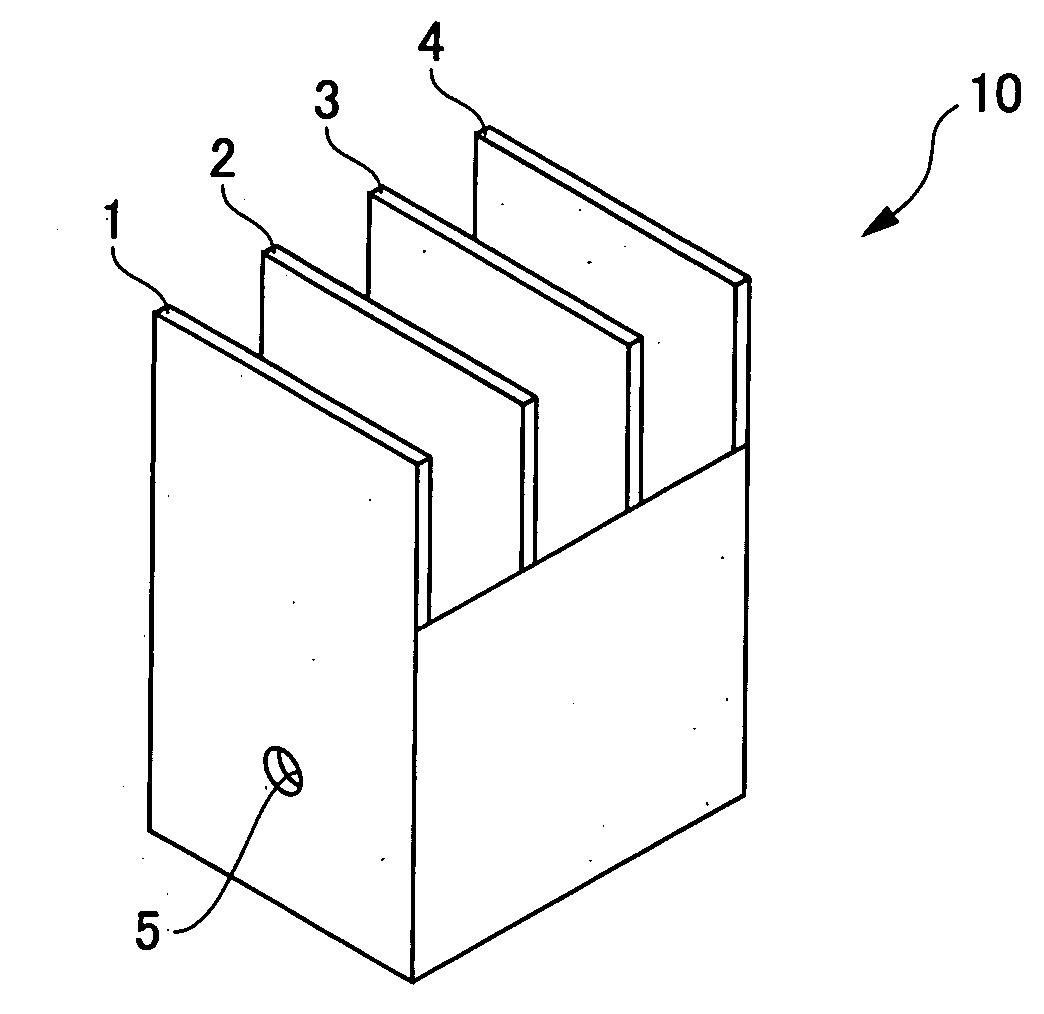Metal surface treatment liquid for cation electrodeposition coating
a technology of metal surface treatment and coating, applied in the direction of liquid/fluent solid measurement, solid state diffusion coating, peptides, etc., can solve the problems of insufficient anti-corrosion properties, insufficient throwing power, and insufficient zinc phosphate treatment, so as to prevent copper, improve coating adhesiveness, and improve the effect of throwing power
- Summary
- Abstract
- Description
- Claims
- Application Information
AI Technical Summary
Benefits of technology
Problems solved by technology
Method used
Image
Examples
production example 1
Production of Hydrolysis Condensate of Aminosilane, Part 1
[0060]As aminosilane, 5 parts by mass of KBE603 (3-aminopropyl-triethoxysilane, effective concentration: 100%, manufactured by Shin-Etsu Chemical Co., Ltd.) was added dropwise using a dropping funnel to a mixed solvent (solvent temperature: 25° C.) containing 47.5 parts by mass of deionized water and 47.5 parts by mass of isopropyl alcohol over 60 minutes to a homogenous state, followed by allowing for reaction under a nitrogen atmosphere at 25° C. for 24 hours. Then, the reaction solution was subjected to a reduced pressure to allow for evaporation of isopropyl alcohol, and deionized water was further added thereto, whereby a hydrolysis condensate of aminosilane including 5% of the active ingredient was obtained.
production example 2
Production of Hydrolysis Condensate of Aminosilane, Part 2
[0061]In a similar manner to Production Example 1, except that the amounts were changed to 20 parts by mass of KBE603, 40 parts by mass of deionized water, and 40 parts by mass of isopropyl alcohol, a hydrolysis condensate of aminosilane including 20% of the active ingredient was obtained.
example 1
[0062]A metal surface treatment liquid for cation electrodeposition coating was obtained by: mixing a 40% aqueous zircon acid solution as a zirconium ion source, copper nitrate as a copper ion source, tin sulfate as the other metal ion source, and hydrofluoric acid; diluting the mixture to give the zirconium ion concentration of 500 ppm, the copper ion concentration of 10 ppm, and the tin ion concentration of 20 ppm; and adjusting the pH to 3.5 using nitric acid and sodium hydroxide. Measurement of free fluorine ion concentration using a fluorine ion meter after adjusting the pH of this treatment liquid to 3.0 revealed a value of 5 ppm.
PUM
 Login to View More
Login to View More Abstract
Description
Claims
Application Information
 Login to View More
Login to View More - R&D
- Intellectual Property
- Life Sciences
- Materials
- Tech Scout
- Unparalleled Data Quality
- Higher Quality Content
- 60% Fewer Hallucinations
Browse by: Latest US Patents, China's latest patents, Technical Efficacy Thesaurus, Application Domain, Technology Topic, Popular Technical Reports.
© 2025 PatSnap. All rights reserved.Legal|Privacy policy|Modern Slavery Act Transparency Statement|Sitemap|About US| Contact US: help@patsnap.com


